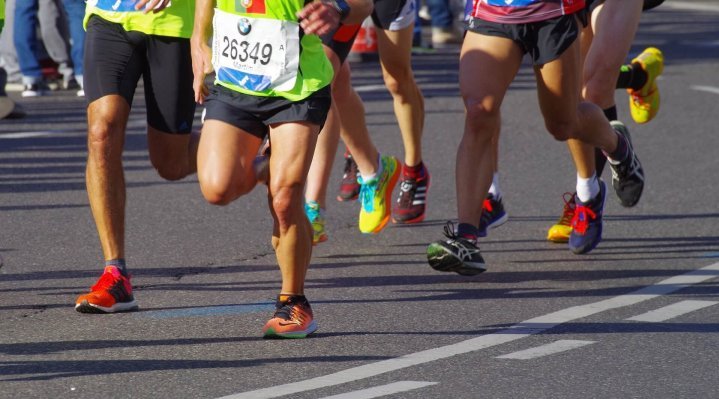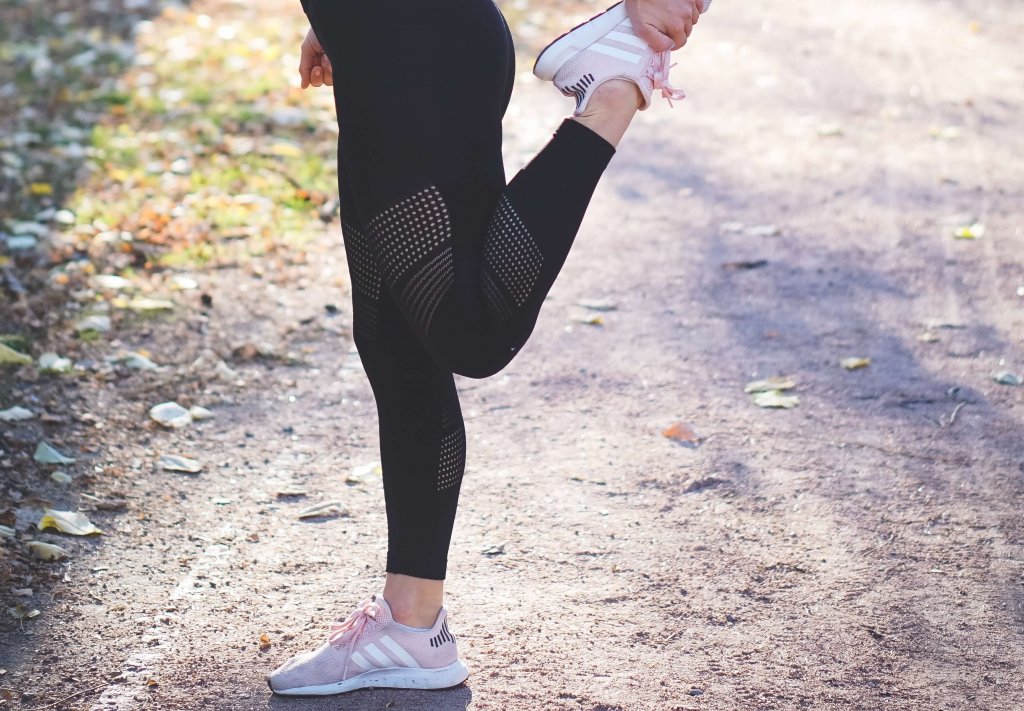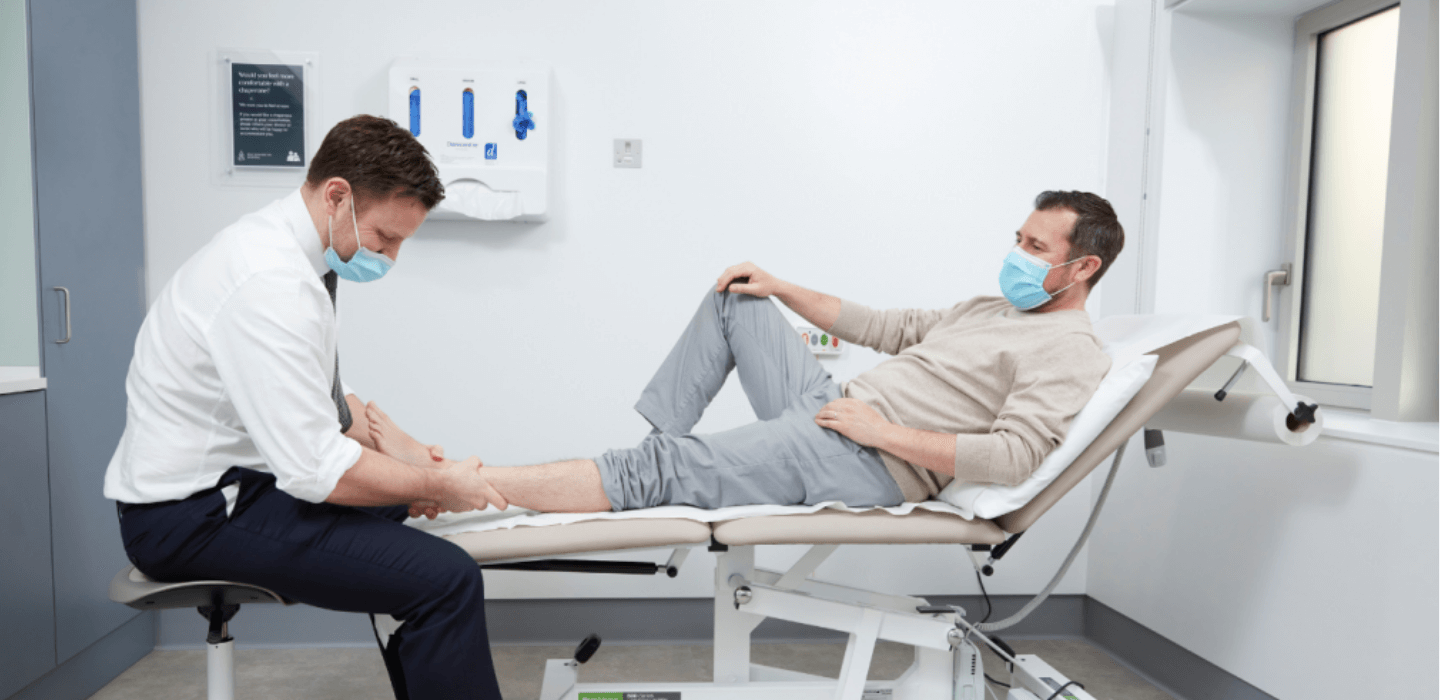How to Prevent Injury from Long Distance Running

Marathon or half marathon distance running can be invigorating and rewarding. But it can also be mentally and physically challenging.
The physical demands that long distance running places on the body can result in anything from annoying, persistent aches, to runner’s knee, and shin splints.
Learning how to prevent and manage running injuries therefore needs to be an important part of your training.
Here’s how you can prepare your body and best avoid injury before your next marathon, thanks to specialist advice from consultant in Sports and Exercise Medicine, Professor Mike Loosemore.
What are the benefits of running?
Running in any capacity has benefits to both our physical health and mental health. Physically, running keeps us fit and helps us manage our weight. It also reduces our risk of heart disease, certain cancers, type 2 diabetes, high cholesterol and high blood pressure.
Regular running also helps to keep our muscles, joints and bones strong and healthy. It’s an affordable way to keep fit, requiring only decent running trainers and weather-appropriate clothing.
As well as these physical benefits, running is great for our emotional wellbeing, too. It helps to destress, boost our mood, provide mental clarity and build confidence.
Runner’s high, a feeling of euphoria during or at the end of a run is a proven phenomenon – running promotes the release of feel-good hormones called endorphins, that have a positive effect on our mood.
Can running be bad for you?
There are situations in which running can have a negative effect on the body, most commonly in runners following punishing regimes and training for long distance runs (half marathons, marathons and beyond).
Long distance training and competing can result in swelling and inflammation in the muscles and joints. In fact, it’s common to experience these after such intense exercise.
With training, the body is remarkable at adapting to this kind of stress, which you should notice as you continue to train — you’ll see incremental improvements in what you’re able to achieve without pain or swelling.
Intense running can also result in a compromised immune system. The body releases the steroid hormone cortisol to cope with the inflammation caused by long distance running. Cortisol can temporarily reduce the function of the immune system, leading to an increased susceptibility to colds and other infections.
The long term, cumulative effects of running
Regular training sessions and long distance races can have a cumulative negative effect on the body. Seemingly small niggles can build up to a much larger, more impactful injury which could mean your next race is frustratingly slow or difficult, or has to be cancelled altogether.
Overuse injuries (injuries that happen due to repeated strain on any muscle or joint) are common in long distance runners. Constantly loading the same injured joint from running, can also consequently lead to secondary osteoarthritis in later life. This repetitive overload can mean the collagen and cartilage that acts as a cushion and shock absorber in the joints, wears away, leading to tiny microfractures and eventually osteoarthritis.
But the most frustrating, and unfortunately common, problem affecting long distance runners is injury.
Common long distance running injuries

The following injuries can be problematic in long distance runners.
Plantar fasciitis
If you have pain in the underside of your foot or feet, you may have plantar fasciitis. This is a common complaint in runners, and is caused by inflammation of the plantar fascia (the band of connective tissue that stretches from your heel to your toes).
It’s a type of repetitive strain injury, caused by overuse of the feet, such as in distance running. The pain is usually worse in the morning and feels like a dull ache or bruise.
Resting and anti inflammatory medications, such as Ibuprofen, at an early stage of the condition may help, but in severe cases, when training is seriously compromised, physiotherapy involving long periods of stretching can be useful.
Runner’s knee
Patellofemoral syndrome, otherwise known as runner’s knee, causes pain in the front of the knee, underneath the kneecap. It’s the most common knee complaint among runners and is exacerbated by running long distances.
Runner’s knee is caused by the kneecap not moving smoothly past the femur (thigh bone). You’re more at risk of developing it if you have an overpronation (your feet roll inwards as they strike the floor) or if you have weakened muscles in your hips, thighs or buttocks. Correcting these factors usually helps.
Physiotherapy can help with rehabilitation from serious runner’s knee pain and discomfort. It can also help prevent the condition from reoccurring.
Iliotibial Band Syndrome (ITBS)
Another common knee complaint, ITBS, also particularly affects long distance runners. The iliotibial band of tissue stretches from the outer hip, down the outside of the thigh, down to the outside of the knee.
This band can rub on the thigh bone when you flex your knee through walking or running. Running long distances, or at a fast pace, can cause irritation where this band rubs, leading to ITBS.
ITBS causes pain on the outer side of the knee. It’s especially common in runners with weak pelvic muscles, who do a lot of downhill running or those who have very low foot arches.
If you’re experiencing a flare up of ITBS, resting for a few days will help, as will stretching prior to running, and applying heat to the area after running. Physiotherapy can help guide you to increase your pelvic strength if your pain is causing so much discomfort that you’re unable to train.
Shin splints
Shin splints, or medial tibial stress syndrome, refers to the painful ache that’s caused by tiny tears in the muscles that surround the shin bone. They’re common in new runners, or runners who’ve had some time off, and are usually an indication that you’ve trained too hard, too quickly.
Pain relief medication and rest will help ease the pain. The best way to avoid shin splints is to increase your speed and/or mileage slowly.
Reducing your risk of injury

If you’re injured, and still continue to run, you could risk making your injury worse. Maintaining good form is essential, as is wearing the correct trainers for your feet. Having a gait analysis carried out at a reputable sports shop will help you buy the right sort of footwear.
It’s important to listen to your body, and learn the difference between pushing yourself to succeed in training, and pushing over your limit and sustaining an injury. Running injuries also include cuts, scrapes, bruises, pulled muscles and broken bones, all potentially caused by pushing yourself so far that you have an accident.
Rest and recovery should be important factors in your training plan, along with strength and conditioning exercises. Yoga can also help with recovery, encouraging flexibility which can significantly decrease injury risk.
More information
- If you’ve sustained a running injury, getting an expert medical diagnosis is important for your recovery and future training and competing. Speaking to your GP is a good first step. (Don’t have a GP?)
- Our Sports and Exercise Medicine department will give you an accurate diagnosis and endeavour to get you back running as quickly as possible.
- If you need physiotherapy as part of your recovery, our dedicated Physiotherapy Centre is also fully equipped to help you.










